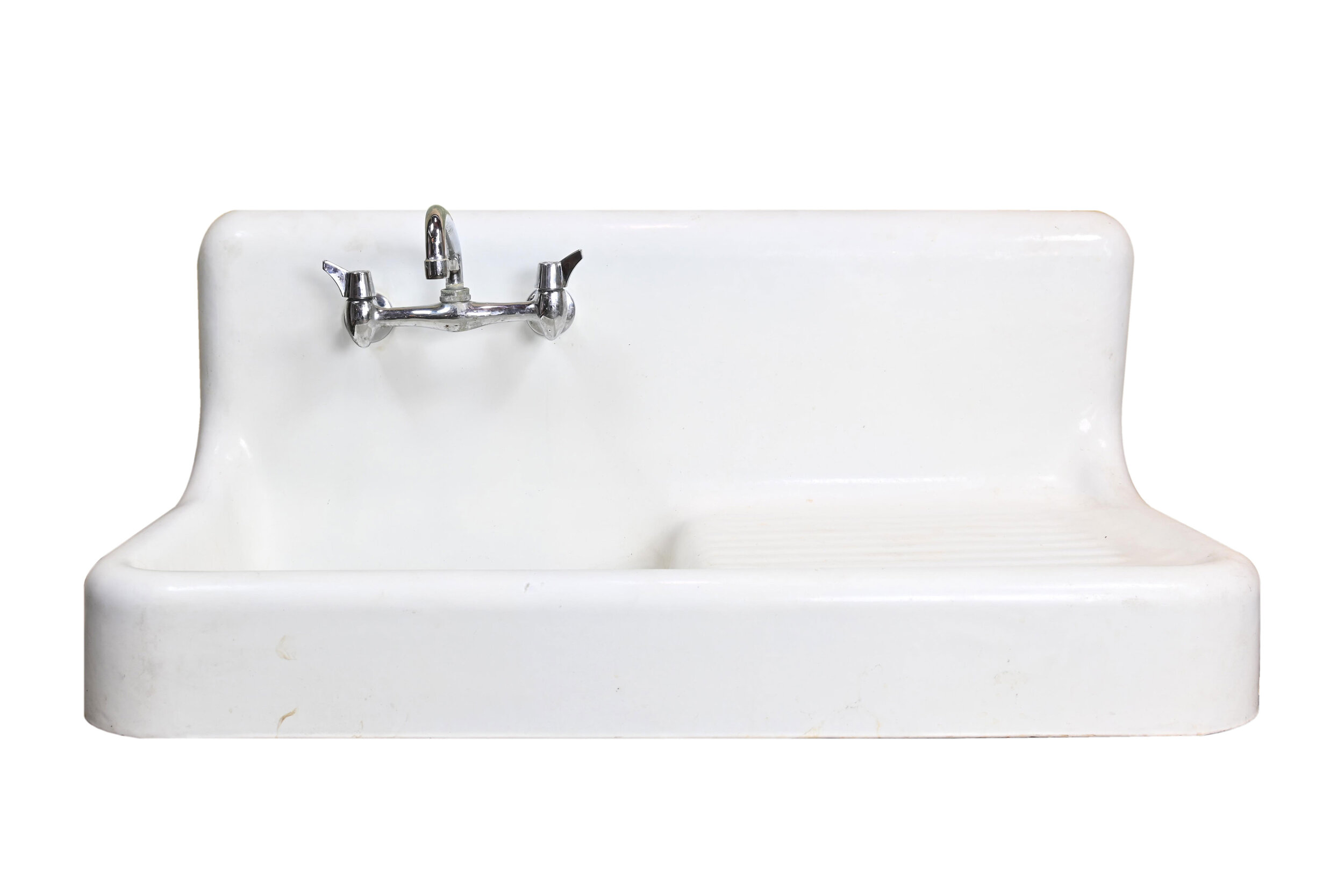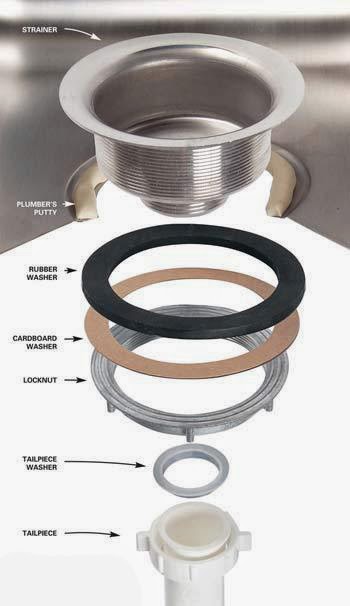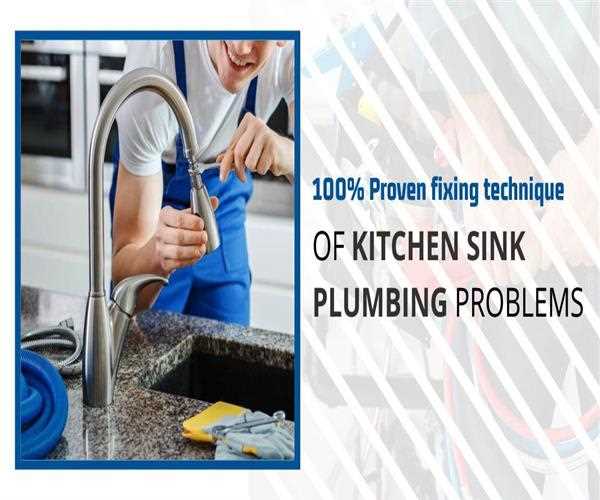1. Back-to-Back Kitchen Sink Plumbing: What You Need to Know
If you have a kitchen with two sinks, you may have heard the term "back-to-back" plumbing. This type of plumbing involves connecting two sinks to a single drain line, with one sink on each side of the wall. It may seem like a simple concept, but there are some important things to know before tackling this plumbing project.
First and foremost, it's crucial to understand the layout of your kitchen and the location of the existing plumbing. This will help you determine if back-to-back plumbing is a viable option for your space. You'll also need to consider the size and style of your sinks, as well as any additional features like garbage disposals or dishwasher connections.
If you're unsure about tackling this project on your own, it's always best to consult a professional plumber who can assess your kitchen and provide expert advice.
2. How to Install a Back-to-Back Kitchen Sink Drain
Assuming you've determined that back-to-back plumbing is the way to go for your kitchen, the next step is installation. This process may vary slightly depending on the layout of your kitchen and the type of sinks you have, but here are the basic steps to follow:
1. Begin by turning off the water supply to your kitchen sinks. This will prevent any water from flowing as you make changes to the plumbing.
2. Next, remove the existing drain lines and traps from both sinks. These will need to be replaced with longer pipes to accommodate the back-to-back setup.
3. Measure the distance between the two sinks and cut a new drain line to fit. Be sure to leave enough room for the trap to connect to both sinks.
4. Install the new drain line and traps, making sure they are securely connected and aligned with the sinks. You may need to use a wrench to tighten the connections.
5. Finally, turn the water supply back on and test the sinks to ensure they are draining properly. If everything looks good, you're all set!
3. Back-to-Back Kitchen Sink Plumbing: Common Issues and Solutions
As with any plumbing project, there are bound to be some challenges along the way. Here are a few common issues that may arise when installing back-to-back kitchen sink plumbing, as well as some potential solutions:
- Uneven pipes: If the pipes connecting the two sinks are not level, one sink may drain faster than the other, causing water to back up. This can be solved by adjusting the pipes to ensure they are even.
- Clogs: With two sinks connected to a single drain line, clogs can be more common. To prevent this, avoid putting large chunks of food or grease down the drain and regularly clean your drains with a mixture of baking soda and vinegar.
- Leaks: If you notice water leaking from any of the connections, it's important to address it immediately. This may require tightening or replacing the pipes and connections.
If you encounter any other issues during the installation or use of your back-to-back kitchen sink plumbing, be sure to consult a professional for guidance.
4. Understanding Back-to-Back Kitchen Sink Plumbing
Now that you know the basics of back-to-back kitchen sink plumbing, it's important to understand how it actually works. Essentially, the two sinks are connected to a single drain line, which then leads to the main sewer line. This allows both sinks to drain into the same pipe, making for a more efficient and space-saving plumbing setup.
It's also worth noting that back-to-back plumbing can be used in other areas of the home, such as bathrooms with two sinks or double vanity setups. The same principles apply, but the installation process may vary slightly depending on the location and layout.
5. Back-to-Back Kitchen Sink Plumbing: Tips and Tricks
If you're planning to tackle back-to-back kitchen sink plumbing on your own, here are a few tips and tricks to keep in mind:
- Measure twice, cut once: This old saying definitely applies to plumbing. It's important to carefully measure and plan out your pipes before cutting to ensure they fit properly.
- Use the right tools: A wrench, pipe cutter, and pliers are essential for this project. Having the right tools on hand will make the process much smoother.
- Don't be afraid to ask for help: If you're feeling overwhelmed or unsure about any step of the process, don't hesitate to call in a professional for assistance. It's better to be safe than sorry when it comes to plumbing.
6. The Importance of Proper Back-to-Back Kitchen Sink Plumbing
Proper plumbing is essential for the functionality and longevity of your kitchen. Back-to-back plumbing can help maximize space and make your kitchen more efficient, but it's crucial to ensure it is done correctly. Improper plumbing can lead to leaks, clogs, and other issues that can be costly and time-consuming to fix.
Investing in quality materials and taking the time to properly install your back-to-back kitchen sink plumbing will save you headaches and potential disasters in the long run.
7. Back-to-Back Kitchen Sink Plumbing: Step-by-Step Guide
For a more detailed breakdown of the installation process, here is a step-by-step guide to follow:
Step 1: Turn off the water supply to your kitchen sinks.
Step 2: Remove the existing drain lines and traps from both sinks.
Step 3: Measure the distance between the two sinks and cut a new drain line to fit.
Step 4: Install the new drain line and traps, making sure they are securely connected and aligned with the sinks.
Step 5: Turn the water supply back on and test the sinks to ensure they are draining properly.
Step 6: Make any necessary adjustments or repairs to ensure proper drainage and functionality.
Step 7: Enjoy your newly installed back-to-back kitchen sink plumbing!
8. Troubleshooting Back-to-Back Kitchen Sink Plumbing Problems
If you encounter any issues with your back-to-back kitchen sink plumbing, here are a few troubleshooting tips:
- Check for leaks: If you notice any leaks, tighten or replace the connections as needed.
- Clear clogs: If one sink is draining slower than the other, try using a plunger to clear any clogs. If that doesn't work, you may need to remove the pipes and manually remove the clog.
- Call a professional: If you're unsure about how to fix the issue or are experiencing more serious problems, it's best to consult a professional plumber for help.
9. Back-to-Back Kitchen Sink Plumbing: DIY or Hire a Professional?
Deciding whether to tackle back-to-back kitchen sink plumbing on your own or hire a professional is a personal choice. If you have experience with plumbing and feel confident in your abilities, it can certainly be a DIY project.
However, if you're unsure about any aspect of the installation or simply want to ensure it's done properly, it's always a good idea to hire a professional plumber. They have the knowledge, skills, and tools to complete the project efficiently and effectively.
10. Upgrading Your Back-to-Back Kitchen Sink Plumbing: What to Consider
If you're considering upgrading your kitchen sink plumbing to a back-to-back setup, here are a few things to keep in mind:
- Budget: Back-to-back plumbing may require purchasing new pipes and connections, so be sure to budget accordingly.
- Space: This type of plumbing may not be feasible in smaller kitchens or in areas with limited wall space.
- Future plans: If you're planning to remodel or renovate your kitchen in the near future, it may be best to wait and install back-to-back plumbing during that process.
Ultimately, the decision to upgrade your kitchen sink plumbing should be based on your specific needs and preferences.
In conclusion, back-to-back kitchen sink plumbing can be a great option for maximizing space and efficiency in your kitchen. With the right knowledge, tools, and techniques, it can be a DIY project or one best left to the professionals. Always prioritize proper installation and maintenance to ensure your plumbing functions properly for years to come.
Why Back to Back Kitchen Sink Plumbing is the Optimal Choice for Your Home

Efficient Use of Space
 When it comes to designing the layout of your kitchen, maximizing the use of space is crucial.
Back to back kitchen sink plumbing
offers a smart solution for small kitchens or open-concept spaces. By positioning two sinks side by side against a shared wall, you eliminate the need for a wide countertop space in between. This creates a more efficient workflow and allows for extra counter space for food preparation or other tasks.
Back to back plumbing
also frees up valuable under-sink cabinet space, which can be used for storage or other appliances.
When it comes to designing the layout of your kitchen, maximizing the use of space is crucial.
Back to back kitchen sink plumbing
offers a smart solution for small kitchens or open-concept spaces. By positioning two sinks side by side against a shared wall, you eliminate the need for a wide countertop space in between. This creates a more efficient workflow and allows for extra counter space for food preparation or other tasks.
Back to back plumbing
also frees up valuable under-sink cabinet space, which can be used for storage or other appliances.
Convenient for Multi-Tasking
 In today's busy world, we are always looking for ways to save time and be more productive.
Back to back kitchen sink plumbing
offers just that. With two sinks, you can easily multitask and have two people working in the kitchen simultaneously.
One sink
can be used for washing dishes while the other can be used for prepping food or washing produce. This not only saves time but also makes kitchen chores more manageable, especially during busy meal prep times or when hosting guests.
In today's busy world, we are always looking for ways to save time and be more productive.
Back to back kitchen sink plumbing
offers just that. With two sinks, you can easily multitask and have two people working in the kitchen simultaneously.
One sink
can be used for washing dishes while the other can be used for prepping food or washing produce. This not only saves time but also makes kitchen chores more manageable, especially during busy meal prep times or when hosting guests.
Enhanced Aesthetics
 In addition to its functional benefits,
back to back kitchen sink plumbing
also adds an aesthetic appeal to your kitchen. Instead of having one large sink taking up the majority of your counter space, you now have two smaller sinks that create a symmetrical and visually pleasing design. This is particularly useful for open-concept kitchens where the sink area is visible from other areas of the home.
Back to back plumbing
also offers a modern and sleek look, making it a popular choice for contemporary kitchen designs.
In addition to its functional benefits,
back to back kitchen sink plumbing
also adds an aesthetic appeal to your kitchen. Instead of having one large sink taking up the majority of your counter space, you now have two smaller sinks that create a symmetrical and visually pleasing design. This is particularly useful for open-concept kitchens where the sink area is visible from other areas of the home.
Back to back plumbing
also offers a modern and sleek look, making it a popular choice for contemporary kitchen designs.
Cost Savings
 One of the most significant advantages of
back to back kitchen sink plumbing
is its cost-saving benefits. By having only one shared wall for both sinks, you save on plumbing costs and materials. Additionally, with the use of a single drain line, you can save on installation and maintenance costs in the long run. This makes
back to back plumbing
a budget-friendly option for those looking to update their kitchen.
In conclusion,
back to back kitchen sink plumbing
offers a practical, convenient, and aesthetically pleasing solution for modern kitchen designs. Its efficient use of space, ability to multitask, enhanced aesthetics, and cost savings make it a popular choice among homeowners and designers alike. Consider incorporating this plumbing design in your kitchen for a more functional and visually appealing space.
One of the most significant advantages of
back to back kitchen sink plumbing
is its cost-saving benefits. By having only one shared wall for both sinks, you save on plumbing costs and materials. Additionally, with the use of a single drain line, you can save on installation and maintenance costs in the long run. This makes
back to back plumbing
a budget-friendly option for those looking to update their kitchen.
In conclusion,
back to back kitchen sink plumbing
offers a practical, convenient, and aesthetically pleasing solution for modern kitchen designs. Its efficient use of space, ability to multitask, enhanced aesthetics, and cost savings make it a popular choice among homeowners and designers alike. Consider incorporating this plumbing design in your kitchen for a more functional and visually appealing space.






/how-to-install-a-sink-drain-2718789-hero-24e898006ed94c9593a2a268b57989a3.jpg)





:max_bytes(150000):strip_icc()/how-to-install-a-sink-drain-2718789-hero-24e898006ed94c9593a2a268b57989a3.jpg)

/how-to-install-a-sink-drain-2718789-hero-b5b99f72b5a24bb2ae8364e60539cece.jpg)



































:no_upscale()/cdn.vox-cdn.com/uploads/chorus_asset/file/19495086/drain_0.jpg)












